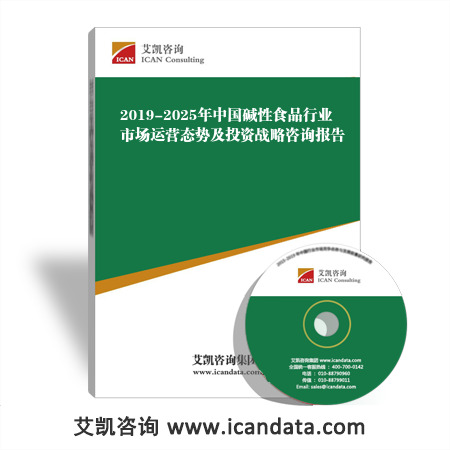数据来源与研究方法:
- 对行业内相关的专家、厂商、渠道商、业务(销售)人员及客户进行访谈,获取最新的一手市场资料;
- 艾凯咨询集团对长期监测采集的数据资料;
- 行业协会、国家统计局、海关总署、国家发改委、工商总局等政府部门和官方机构的数据与资料;
- 行业公开信息;
- 行业企业及上、下游企业的季报、年报和其它公开信息;
- 各类中英文期刊数据库、图书馆、科研院所、高等院校的文献资料;
- 行业资深专家公开发表的观点;
- 对行业的重要数据指标进行连续性对比,反映行业发展趋势;
- 通过专家咨询、小组讨论、桌面研究等方法对核心数据和观点进行反复论证。
报告简介:

摘要
目录及图表
1. Analyst View
2. Industry Snapshot
3. Industry Growth Supporters
3.1 Growing Economy
3.2 Government Support
3.3 Infrastructure
3.4 Foreign Investment
4. Industry Analysis by Segment
4.1 Software Products
4.2 System Integration
4.3 Software Technology Services
4.4 Embedded System Software
4.5 IC Design
5. Vertical Segment Analysis
5.1 Government
5.2 Retail
5.3 Banking & Finance
5.4 Manufacturing
5.5 Healthcare
5.6 Telecom
5.7 Insurance
5.8 Oil
5.9 Transportation
6. Potential Growth Areas
6.1 SaaS Market
6.2 ERP
6.3 3G Application Market
6.4 Management Software Market
6.5 Middleware Market
6.6 SOA
6.7 OA & Collaboration Software
6.8 Linux Software
6.9 IT Education & Training Market
6.10 Research Centers
7. Roadblocks
7.1 Inability to Serve Multinationals
7.2 Talent Pool
7.3 Fragmented Market
7.4 Language
8. An Emerging Segment - Exports
9. Major Parks
9.1 Shanghai
9.2 Beijing
9.3 Shenzhen
9.4 Dalian
9.5 Guangzhou
9.6 Hangzhou
10. Analysis of Key Players
10.1 UFIDA Software Co. Ltd
10.2 Kingdee International Software Group Co. Ltd
10.3 CDC Software
10.4 Neusoft
10.5 hiSoft Technology International Ltd.
10.6 Beyondsoft
10.7 VanceInfo Technologies Inc.
10.8 Chinasoft International Ltd.
List of Figures:
Figure 2-1: China - Software Industry (in Billion RMB), 2001-2007
Figure 2-2: China - Share in Global Software Industry (%), 2001 & 2007
Figure 2-3: China - Software Industry by Segment (%), 2007
Figure 2-4: China - Top Regions in terms of Software Revenue (in Billion RMB), 2007
Figure 2-5: China - Top Regions in terms of Growth in Software Revenue (%), 2007
Figure 2-6: China - VC Investment in Software Industry (in Million US$), 2006-2008E
Figure 2-7: China - Forecast for Software Industry (in Billion RMB), 2008-2012
Figure 3-1: China - GDP at Current Price (in Trillion RMB), 2003-2007
Figure 3-2: China - Fixed Asset Investment in Urban & Rural Areas (%), 2007*
Figure 3-3: China - Per Capita Disposable/Net Income* of Urban & Rural Households (in RMB), 2002-2007
Figure 4-1: China - Software Product Revenue (in Billion RMB), 2006 & 2007
Figure 4-2: China - Top Regions in terms of Software Product Revenue (in Billion RMB), 2007
Figure 4-3: China - Top Regions in terms of Growth in Software Product Revenue (%), 2007
Figure 4-4: China - Forecast for Software Product Revenue (in Billion RMB), 2008-2012
Figure 4-5: China - System Integration Revenue (in Billion RMB), 2006 & 2007
Figure 4-6: China - Top Regions in terms of System Integration Revenue (in Billion RMB), 2007
Figure 4-7: China - Top Regions in terms of Growth in System Integration Revenue (%), 2007
Figure 4-8: China - Forecast for System Integration Revenue (in Billion RMB), 2008-2012
Figure 4-9: China - Software Technology Services Income (in Billion RMB), 2006 & 2007
Figure 4-10: China - Forecast for Software Technology Services Income (in Billion RMB), 2008-2012
Figure 4-11: China - Embedded System Software Revenue (in Billion RMB), 2006 & 2007
Figure 4-12: China - Forecast for Embedded System Software Revenue (in Billion RMB), 2008-2012
Figure 4-13: China - IC Design Revenue (in Billion RMB), 2006 & 2007
Figure 4-14: China - Forecast for IC Design Revenue (in Billion RMB), 2008-2012
Figure 5-1: China - IT Spending in Government Segments (in Billion RMB), 2006 & 2007E
Figure 5-2: China - Forecast for IT Spending in Government Segments (in Billion RMB), 2008-2012
Figure 5-3: China - IT Spending in Retail Industry (in Billion RMB), 2006 & 2007E
Figure 5-4: China - Forecast for IT Spending in Retail Industry (in Billion RMB), 2008-2012
Figure 5-5: China - IT Spending in Banking Industry (in Billion RMB), 2006 & 2007E
Figure 5-6: China - Core Banking Solutions Market (in Million RMB), 2005 & 2006
Figure 5-7: China - Forecast for IT Spending in Banking Industry (in Billion RMB), 2008-2012
Figure 5-8: China - IT Spending in Manufacturing (in Billion RMB), 2006 & 2007
Figure 5-9: China - Forecast for IT Spending in Manufacturing (in Billion RMB), 2008-2012
Figure 5-10: China - IT Solutions Market in Manufacturing (in Billion RMB), 2007E & 2012F
Figure 5-11: China - IT Spending in Telecom Industry (in Billion RMB), 2006 & 2007E
Figure 5-12: China - IT Application Solutions Market in Telecom Industry (in Billion RMB), 2007E & 2012F
Figure 5-13: China - Forecast for IT Spending in Telecom Industry (in Billion RMB), 2008-2012
Figure 5-14: China - Forecast for IT Investment in Telecom Industry by Segment (%), 2012
Figure 5-15: China - Forecast for IT Solutions Market in Insurance (in Million RMB), 2008-2012
Figure 5-16: China - IT Investment in Oil Industry (in Billion RMB), 2007 & 2012F
Figure 5-17: China - IT Solutions Market in Oil Industry (in Billion RMB), 2007 & 2012F
Figure 5-18: China - Forecast for IT Spending in Transportation (in Billion RMB), 2008-2012
Figure 5-19: China - Forecast for IT Solutions Market in Transportation (in Billion RMB), 2008-2012
Figure 6-1: China - SaaS Market (in Billion RMB), 2006 & 2007E
Figure 6-2: China - Forecast for SaaS Market (in Billion RMB), 2008-2012
Figure 6-3: China - Universal ERP Market (in Billion RMB), 2006 & 2007
Figure 6-4: China - Forecast for Universal ERP Market (in Billion RMB), 2008-2012
Figure 6-5: China - Universal Financial Planning Software Demand (in Billion RMB), 2006 & 2007
Figure 6-6: China - Management Software Market (in Billion RMB), 2003-2007E
Figure 6-7: China - Forecast for Management Software Market (in Billion RMB), 2008-2012
Figure 6-8: China - Middleware Products Market (in Billion RMB), 2003-2007E
Figure 6-9: China - Forecast for Middleware Products Market (in Billion RMB), 2008-2012
Figure 6-10: China - SOA-driven Software & Services Market (in Million US$), 2006 & 2007E
Figure 6-11: China - Forecast for SOA-driven Software & Services Market (in Million US$), 2008-2012
Figure 6-12: China - OA & Collaboration Software Market (in Billion RMB), 2004-2007E
Figure 6-13: China - Forecast for OA & Collaboration Software Market (in Billion RMB), 2008-2012
Figure 6-14: China - Linux Software Market (in Million RMB), 2006 & 2007E
Figure 6-15: China - Forecast for Linux Software Market (in Million RMB), 2008-2012
Figure 6-16: China - Top Five Players in IT Education & Training Services Market (%), 2006
Figure 8-1: China - Software Exports (in Billion US$), 2001 & 2007
Figure 8-2: China - Forecast for Software Exports (in Billion US$), 2008-2012
Figure 8-3: China - Software Outsourcing Market (in Million RMB), 2003-2007E
Figure 8-4: China - Forecast for Software Outsourcing Market (in Billion RMB), 2008-2012
List of Tables:
Table 9-1: China - Top Ten Software Technology Parks
Traditionally, China has been widely known for its world-class low cost manufacturing facilities. But the ongoing battle to make China a ‘hi-tech’ service-based economy has fuelled growth in the domestic software industry in recent years. The factors that are encouraging the software players (both domestic and foreign) to enter into China’s software industry include government support, easy access to rapidly developing IT infrastructure, vast domestic potential and availability of low cost resources, says "China Software - World Class Low Cost Manufacturing”, the latest research report by RNCOS.
According to this report, the Chinese government has made continuous efforts in the form of IT investment, construction of software parks, and provision of quick approvals to secure international investment to accelerate the China Software industry at a rapid pace.
The potential of the industry is not only limited to the domestic consumption, foreign majors are also eying the industry as viable software outsourcing destination. In this regard, this report thoroughly studies China software industry by highlighting its driving factors and major challenges. It also provides an insight into the software industry by verticals and studies the key opportunity areas that have emerged due to the fast growth of the software industry in China.
Key Research Findings
- China's software industry grew at a CAGR of more than 39% over the period from 2001 to 2007 and is further anticipated to grow at a CAGR of nearly 22% through 2012.
- Rapid growth in IT spending among various industrial segments, including government, banking and manufacturing are likely to propel the domestic software industry in near future.
- The ongoing large-scale endeavors for 3G deployments are expected to fuel growth in the demand for 3G telecom software across various application platforms.
- Expanding broadband infrastructure with increased Internet penetration among Small and Medium Businesses (SMBs) will help the SaaS market to grow at a CAGR of approx 44% during 2008-2012.
- The software outsourcing market is anticipated to grow at a CAGR of nearly 34% from 2008 to 2012.
- The current perception of lack of required talent in coming few years is urging the foreign IT training and education centers to expand into China’s IT education market.
Key Issues Analyzed in the Report
- What is the current status of the software industry in China?
- How is the future outlook of the industry?
- What are the emerging trends in China software industry?
- How does software spending and adoption status in China vary by vertical industry?
- Which areas of the China software market are expected to show the fastest growth over the next few years?
- Where do Chinese software companies lack in serving MNCs?
- How big is the China software outsourcing market and what are its future prospects?
- Who are the key players in China software industry?
Research Methodology Used in the Report
Information Sources
Information has been sourced from various credible sources like books, newspapers, trade journals, white papers, industry portals, government agencies, trade associations, monitoring industry news and developments, and through access to more than 3000 paid databases.
Analysis Methods
RNCOS industry forecast and analysis is based on various macro- and microeconomic factors, sector and industry specific databases, and our in-house statistical and analytical model. This model takes into account the past and current trends in an economy, and more specifically in an industry, to bring out an objective market analysis.
Our industry experts study the relationship between various industry and economic variables to ensure the required accuracy and desired check on the quality of data and information given in the report.
软件
















